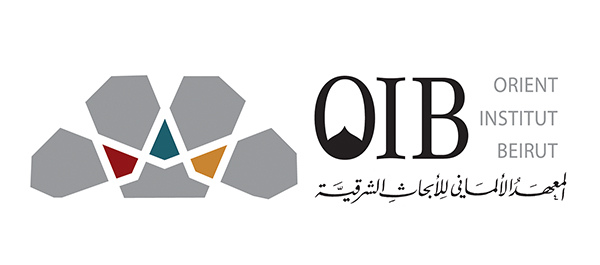Conference: "Reconstructing Neighborhoods of War: Beirut, Warsaw, Dresden, Aleppo et al."
November 29, 2018 - December 1, 2018
Abstracts due by August 1, 2018
Reconstructing neighborhoods destroyed in war involves two aspects which are both interrelated and interdependent: From the technical perspective issues as mapping the damages, developing strategic plans for reconstruction, restoration and renovation of buildings and infrastructures, and, in the process, possibly archeological examinations. From the social perspective it involves questions pertaining to the social fabric of the destroyed neighborhoods. For neighborhoods are the spatial and social clusters which make up cities. A neighborhood is not only a city quarter, i.e. a bounded geographical territory made up of living spaces but also a series of social networks of varying intensity where neighbors interact in various ways.
While the spatial concept of neighborhood has long been the focus of geographical, architectural and archeological research, the social concept of neighborhood has been quite neglected. This is especially true when it concerns the question of reconstruction after armed conflict.
Neighborly relations are multi-faceted and ambiguous. Mostly sociological research has shown that the concept of neighborliness, i.e. the set of expectations or norms for behavior in a neighborhood entails mostly an aspect of mutual aid in either the daily life (more socially inclined neighbors) or an emergency (less socially inclined neighbors). Neighbors can have a wider network of neighborly relations or one close to their living space. Research has shown that only a minority, even in big Western cities, prefers total anonymity and independence. Much less research has been undertaken in non-western neighborhoods where, as a hypothesis, also kinship and group affiliation plays a role in neighborhoods.
Everywhere, however, the mostly forced spatial relationships of neighborhood are on the one hand a source of mutual aid and cooperation and, at the same time, by their very nature, also the source of potential friction, hostility and even violence. Neighborhoods have been described as extensions of one’s household, i.e. one’s most personal space. Conflicts between neighbors thus are particularly bitter and long-lasting.
Residents can be tied to and anchored in their neighborhoods in mostly two ways which reflect the double aspect of neighborhood: they can be attached to the actual locale with its specific traits. Or they can be tied more to the relationships and social networks they have established with their neighbors.
When it comes to the successful reconstruction of cities after wars, all these aspects play a role. The aim of the conference is to find out in a historical and comparative way how neighborhoods had to be socially structured for them to be reconstructed in a way so that they function successfully again. Or, in cases where they did not function well how they could be reconstructed in a better way.
We consciously want to compare cities from various world regions (Europe, Eastern Europe, Middle East) and of different sizes, which are of course situated within specific historical political war and post-war settings. We therefore invite concrete examples of cases of neighborhoods which had to be rebuilt after conflict. We encourage the bottom-up perspective which especially looks at people on the ground – neighbors, neighborhoods, local responsibles and stakeholders for reconstruction and how they used (and use) the possibilities open to them in the face of political and other odds.
Questions to be tackled (and to be chosen from):
- What kind of neighborhood(s) in both the spatial and the social sense are you dealing with? We invite both mappings as well as analyses of the social fabric.
- What kind of neighborly relations were to be found among the residents? What kinds of active and lived neighborliness, in varying degrees of intimacy? Is this especially important when it comes to neighborhoods made up of a mix of diverse groups and individuals cohabitating the same space? Or were/are good neighborly relations vital in the face of difficult living conditions in the city/country?
- What kind of attachment to the neighborhood did prevail? Was it to the place itself or to the social networks of the neighbors living there? After reconstruction, who came back to live there? People with strong place attachment to the physical space of the neighborhood? Or people who had rather been attached to the social networks of the neighborhood? Do people come back to live with their old neighbors again even if there was hostility and armed conflict between them?
- In which neighborhoods does integration of refugees function more, where does it function less?
- What was the role of the state/government and what policies were put in place to either encourage old neighborhoods to function again after reconstruction, or to build new neighborhoods with the aim to attract new residents? What were the specific goals of government in these policies? Or did governments follow blindly the plans and maps of technocrats and developers?
- Are people today satisfied with the ways their cities and neighborhoods were reconstructed? What were their wishes, how did they voice them, and are they satisfied with the reconstruction, which can be a process spanning a generation and more, today?
- What kinds of neighborhoods came out most successful in having their quarter and city reconstructed according to their wishes? What was the difference to other neighborhoods and cities which were less successful?
- What are the myths and heroic stories that were constructed after the war regarding neighbors and citizens, and the reconstruction of neighborhood and city?
- What lessons can be be learned from the historical cases for the reconstruction of cities destroyed in war today, as Aleppo, Mossul and others?
Please send preliminary title and abstract (ca. 300 words) to sek@orient-institut.org and schaebler@orient-institut.org by no later than August 1, 2018.
This call was first published on the OIB website.

